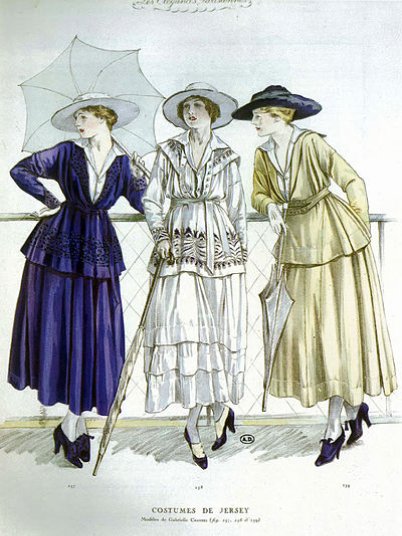Jersey Fabric
“Luxury must be comfortable, otherwise it is not luxury.”
- Coco Chanel
Chanel's initial triumph was her innovative use of jersey, a machine knit material manufactured for her by the firm Rodier.
Traditionally relegated to the manufacture of undergarments and sportswear (tennis, golf, and beach attire), jersey was considered too "ordinary" to be used in couture, and was disliked by designers because the knit structure made it difficult to handle compared to woven fabrics. According to the Metropolitan Museum of Art, "With her financial situation precarious in the early years of her design career, Chanel purchased jersey primarily for its low cost. The qualities of the fabric, however, ensured that the designer would continue to use it long after her business became profitable." Chanel's early wool jersey traveling suit consisted of a cardigan jacket and pleated skirt, paired with a low-belted pullover top. This ensemble, worn with low-heeled shoes, became the casual look in expensive women's wear. Chanel's introduction of jersey to high-fashion worked well for two reasons: First, the war had caused a shortage of more traditional couture materials, and second, women began desiring simpler and more practical clothes. Her fluid jersey suits and dresses were created with these notions in mind and allowed for free and easy movement. This was greatly appreciated at the time because women were working for the war effort as nurses, civil servants, and in factories. Their jobs involved physical activity and they had to ride trains, buses, and bicycles to get to work. For such circumstances, they desired outfits that did not give way easily and could be put on without the help of servants.
